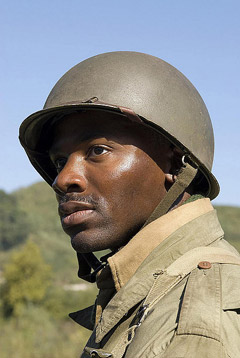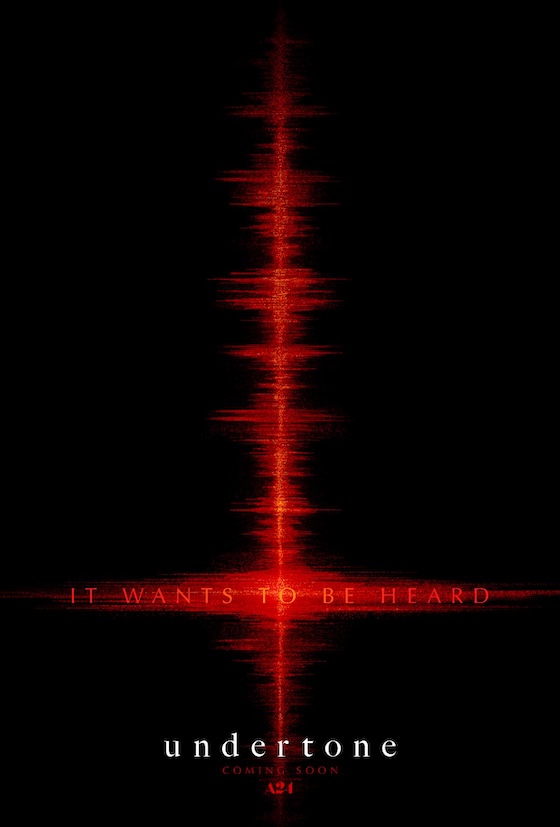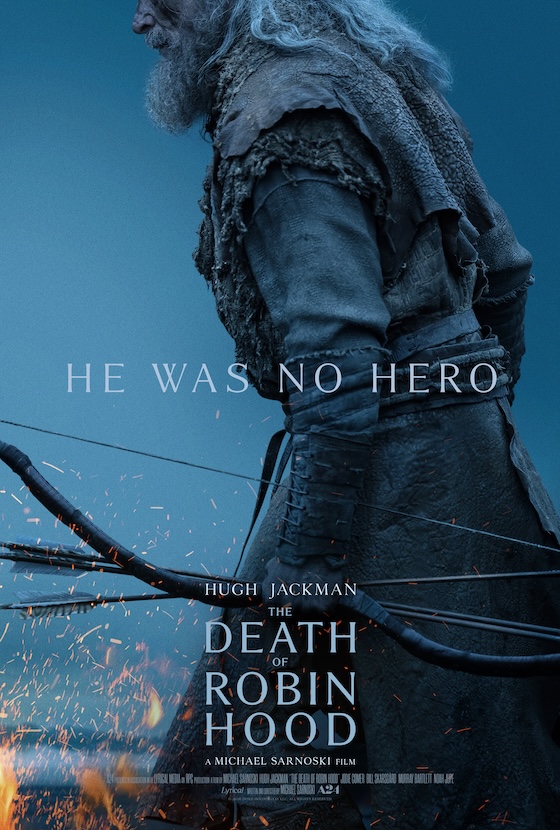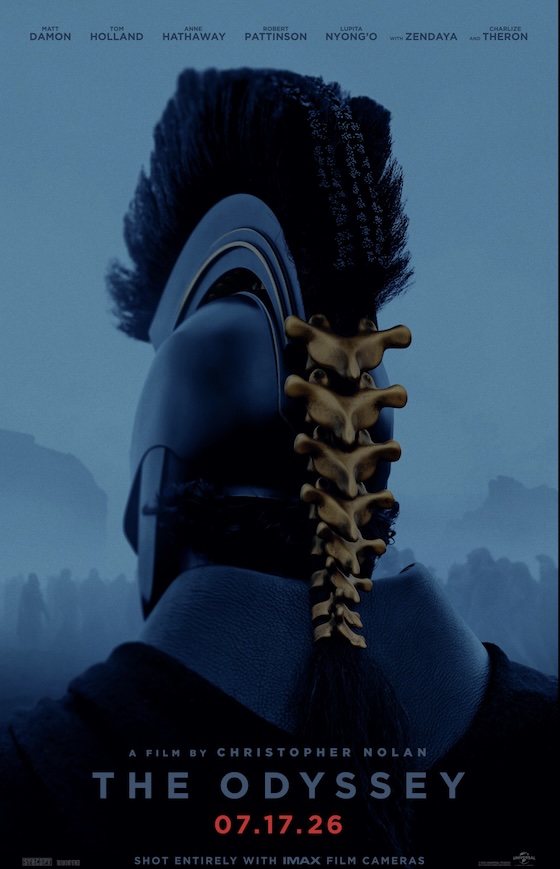{googleAds}
<div style="float:left">
<script type="text/javascript"><!--
google_ad_client = "pub-9764823118029583";
/* 125x125, created 12/10/07 */
google_ad_slot = "8167036710";
google_ad_width = 125;
google_ad_height = 125;
//-->
</script>
<script type="text/javascript"
src="http://pagead2.googlesyndication.com/pagead/show_ads.js">
</script></div>{/googleAds}There's a very important, but largely untold, story happening in Spike Lee's gripping WWII epic The Miracle at St. Anna. While Lee's film, adapted for the screen by James McBride from his own novel of the same name, is centered on four particular soldiers who find themselves trapped behind German lines in the Tuscany region of Italy during WWII, the significance comes from the fact that this is the first Hollywood film to feature the all-black 92nd Division Buffalo Soldiers who experienced the same tragedies and triumphs as their white brethren on the battlefields of Europe.
But more than it is a war film and all that implies, Miracle at St. Anna is a story of friendship and of getting beyond race and prejudices... about helping one another in the midst of war. Another of the film's achievements is that it marks one of the few instances where Lee's controversial leanings take a back seat to the story being told. Sure, racism is at the heart of the story, but he pulls back on the reins of his typical heavy-handedness. The film is book-ended by a framing device set in the 80s when a postal worker named Hector Negron goes, well... postal, shooting a customer in the chest with a German Luger. While searching Negron's apartment, the police uncover the head of a marble statue that once adorned a Florentine bridge bombed by the Nazis.
The film is book-ended by a framing device set in the 80s when a postal worker named Hector Negron goes, well... postal, shooting a customer in the chest with a German Luger. While searching Negron's apartment, the police uncover the head of a marble statue that once adorned a Florentine bridge bombed by the Nazis.
Flash back to a platoon of Buffalo Soldiers tramping through a war-ravaged Italian countryside. In one of the film's most harrowing action sequences, the soldiers quickly come under friendly fire due to the careless acts of a racist platoon commander (Omari Hardwick). A particularly close-knit foursome soon finds itself behind enemy lines and cut off from help.
Festooning the accoutrements of one soldier is the aforementioned piece of statuary. It becomes a good luck charm of sorts as its wearer, the gigantic PFC Sam Train (Omar Benson Miller), seems to gain courage and a bit of magical invincibility while in possession of the piece of stonework. He rescues a young boy (Matteo Sciabordi) from a bombed out building and the two become closely attached. Despite their language differences, the pair soon finds an effective way to communicate via a sequence of taps. Miller and Sciabordi are wonderful together, and the film finds some of its most heartfelt moments when the two are sharing a scene.
The group's staff sergeant Aubrey Stamps (Derek Luke) is the leader of the bunch. He's a college graduate torn by the irony of feeling more freedom in his enemy's country than in his own. His opposite persona, careless and even a bit selfish, is sergeant Bishop Cummings (Michael Ealy) a slick-talking ladies man. Rounding out the group is radioman Negron, whose ability to speak Spanish provides a means of communication with their Italian hosts.
Rather than focus on the soldiers' immediate plight and attempt at rescue, Lee and McBride soon fan the story out to incorporate the tribulations of an extended cast of characters, including many of the town's inhabitants. Among these are members of the Italian underground resistance, or partisans, lead by The Great Butterfly (Pierfrancesco Favino), as well as other men, women, and children emboldened by the viciousness of war.
In one of the film's key sequences we see depicted the titular historical massacre at Sant' Anna di Stazzema where hundreds of civilians even women, children, and the elderly - are corralled and then mowed down by the Nazis. This is a particularly difficult sequence to stomach, but as seen through the lens of Lee's camera, it's impact puts it right up there with the best of any other war movie... even the Normandy beach landing scene in Saving Private Ryan. It's that gut wrenching and that powerful.
Many will surely castigate the film because it rebukes a singular approach to the subject matter at hand, instead developing many delicious back stories and fairy-tale-like sequences that weave a wonderful tale of fantasy, heroism, love and compassion.... a poem of sorts. It's a character-driven drama and because of that, some lovers of the war genre may feel let down. Sure, Lee's reach sometimes exceeds his grasp, but even at a healthy 160 minutes, there's neither a single uninteresting frame nor a word of wasted dialogue. It's not a simple action-packed war drama with mile-a-minute explosions and acts of super-human heroism. The buffalo soldiers deserve better than that. Lee shows us that their devotion to a country that didn't want them is heroic enough. They represented dignity in the face of adversity, so their story needed to be told with sophistication and significance. Miracle at St. Anna is a rewarding achievement that we should all feel honored to experience if for no other reason than to learn about the Buffalo Soldiers.
|
||||||||||||||||||
DVD Details:
Screen Formats: 2.40:1 Anamorphic
Subtitles: French, Spanish
Language and Sound: English: Dolby Digital 5.1; French: Dolby Digital 5.1; Spanish: Dolby Digital 5.1; English: PCM Stereo
Other Features: Color; interactive menus; scene access; deleted scenes; "Deeds Not Words"; "The Buffalo Soldier Experience."
Supplements:
* Commentary
o None
* Featurettes
o None
* Deleted Scenes:
o Deeds Not Words
o The Buffalo Soldier Experience
Number of Discs: 1
{pgomakase}



































